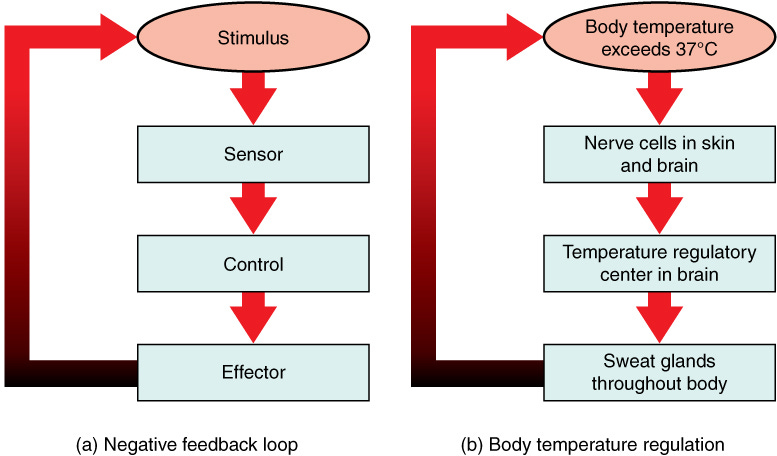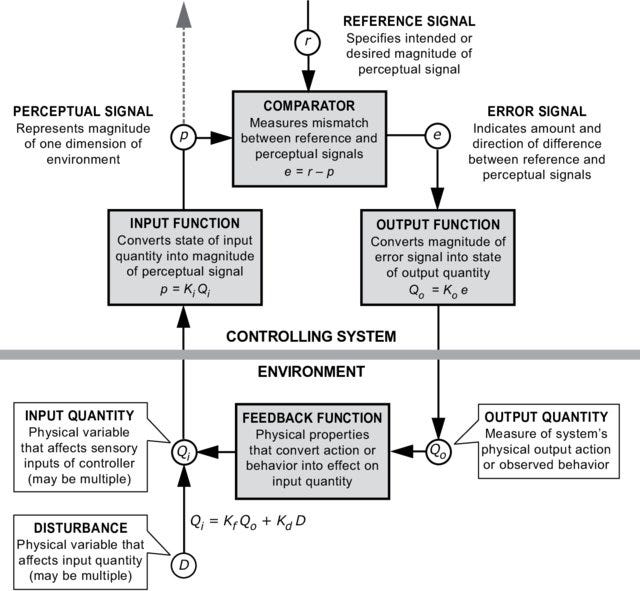Spatial Newsletter™ #021
This week we're all about Perceptual Control Theory (PCT), a diverse psychological theory with several practical applications.
Welcome to Spatial Newsletter™! This week we have a special issue featuring Perceptual Control Theory (PCT). Why? Because it created a paradigm shift in my thinking and brought me new insights into human behavior, helped me to test the assumptions of theories from different fields, gave me new ideas for products, and more, and I believe it can do the same for you, dear reader. “Behavior is the control of perception” -William T. Powers, developer of PCT
Perceptual Control Theory: When Negative Feedback is a Positive
The Wikipedia article on Perceptual Control Theory provides a good opening sentence. “Perceptual Control Theory (PCT) is a model of behavior based on the properties of negative feedback control loops.” Negative feedback, in this case, is not like having to hear your boss kvetching about your latest blunder. Instead,
“Negative feedback or balancing feedback occurs when some function of the output of a system, process, or mechanism is fed back in a manner that tends to reduce the fluctuations in the output, whether caused by changes in the input or by other disturbances.”
Basically, negative feedback is a good thing because it keeps a system from getting out of whack due to disturbances from the environment (unlike your boss’ kvetching, which is such a disturbance). This type of feedback is central to classical control theory.
A simple negative feedback system used in electronic engineering, for example (Source: Wikipedia)
Control Theory for Living Systems
William Powers developed Perceptual Control Theory in the 1950s when cybernetics (basically, the study of technological control systems and their application to other disciplines) was in its heyday. As Powers put it,
“PCT is based on classical control theory, which is the mathematical treatment of systems in which the outputs continually act on the inputs to keep them in states specified by reference signals inside the behaving system.”
In engineering control theory reference signals are set by a user outside of the system. An example is a thermostat where a person sets the temperature (the reference signal) they want a room to become or stay at (the desired state). If, for instance, the temperature in the room rises above the set temperature because someone left the window open too long (a disturbance from the environment) then the air conditioning unit blows cool air (the system acts) until the room becomes comfortable to the person who set the temperature (the desired state).
In living organisms, though, reference signals are both set and maintained internally. The study of homeostasis (basically, biological control systems) as seen in the diagram below predates and influenced both cybernetics and Powers’ work,
A feedback loop in the human body (Source: Wikipedia)
but it was Powers who had the insight to apply control theory to human psychology and, thus, fulfill the promise of cybernetics.
The Third Paradigm of Psychology
PCT is called the third paradigm of psychology after behaviorism and cognitive psychology from which it fundamentally differs. The key difference is what the latter paradigms see as the cause of behavior. For PCT, in accordance with the principle of negative feedback, outputs act on inputs and vice versa in a circular fashion, while, by contrast, the stimulus-response model used to explain behavior in behaviorism and cognitive psychology says that a stimulus (input) causes a response (output) in a linear fashion.
Dr. Rupert Young in his intro to PCT explains the blind spots of the stimulus-response model.
“Even a cursory glance at an everyday example of behaviour demonstrates that the stimulus-response view does not provide an adequate explanation. Consider a man in a bar who switches on the television in order to watch football. Some of the people in the bar turn to look at the screen, which seems to be a classic response to a stimulus, of the football on the television. But what about those who did not turn to watch; same ‘stimulus’, but no response? And how about the guy who switched on the television in the first place; no stimulus, but a ‘response’?
PCT, as a theory of purpose-driven behaviour, can easily dispel any confusion. All of the participants have purposes, internal motivations, which are individual to themselves. The first person has a goal to watch football so acted to achieve that goal by switching on the television. The other watchers have an on-going football-watching goal which came into focus when the football became available. The remaining people lacked any goal to watch football so showed no interest.”
Why?
Well, this leads us to Bill Powers’ famous aphorism:
“Behavior is the Control of Perception.”
I like the way psychotherapist Lynndal Daniels describes it in his LinkedIn article.
“[W]e (and all living things) act on our environments in order to perceive them the way we would like them to be. We are all composed of a network of “just rights” (expectations, wants, goals, preferences, values, etc.) that are continually compared to recordings of the current state of the world. When they match, we’re content… When there’s a mismatch in [what is] “just right” with “what is” we act/do something to make it just right again.
This is not a linear process; it is a negative feedback loop as depicted in the diagram below.
The basic Perceptual Control Diagram
If trying to decipher that diagram made your eyes go wonky, there’s nothing wrong with you. That happens. If you take the time to mine it, though, there is gold and gemstones there.
There is still much more to get into about PCT like reorganization (PCT’s theory of learning) and the hierachy of perceptual control systems as seen below in the poster created by Dr. Eva de Hullu, President of The International Association for Perceptual Control Theory (IAPCT). If you would like to explore the perceptual control hierarchy Eva breaks it down here.
We’ll finish up with how PCT has been applied and could be applied.
A Perceptual Control Revolution?
“How can a single theory be applied to diverse fields such as human performance, robotics, neuroscience, animal behaviour, sociology and mental health? Why does it pose a challenge to existing approaches? Can the search for ‘causes’ of behaviour across these domains be replaced by a single, universal property of organisms: action as the control of sensory input?”
Applications: Past, Present, Personal, & Potential
Besides the list mentioned above PCT research has been also applied in experimental psychology, social psychology, developmental psychology, organizational psychology and management, ethology, anthropology, linguistics, education, developing a psychotherapy called the Method of Levels (MOL), and still other fields.
Dr. Young has successfully applied PCT to the emerging technologies of robotics and self-driving cars. Check out his Dynamic Visual Robot Arm Control. (We need to get him some funding!)
Fun factoid: I discovered PCT after reading sociologist Dr. Kent McClelland’s 2014 paper “Cycles of conflict: A computational modeling alternative to Collins’s theory of conflict escalation” in Sociological Theory 32 (2). It blew my mind. His application of PCT to sociology and social psychology is brilliant.
Since discovering the theory years ago, I’ve attempted to apply it to the following:
Kent’s paper “Perceptual Control and Social Power” making a discovery about how else PCT could be applied to social power (that he acknowledged! a big moment for me),
military strategy (ping ponging some ideas with another brilliant PCT scholar named Martin Taylor, about Sun Tzu as a control theorist, wound up in a chapter of his upcoming tome, another nice moment for me),
business strategy,
organizational structures,
startups and startup ecosystems,
writing a company’s vision and mission statements,
emotions research,
and one I’d still love to work on - PCT for purpose-driven game characters (my very first idea for a company).
I also have a hunch (but it’s just a hunch) that PCT could be applied to the smart contracts that underlie both NFTs and DAOs. How about for ‘simulator sickness’ in VR?
Well, that’s all, folks.
If you’d like to learn more about PCT, follow the rabbit here:
International Association for Perceptual Control Theory (iapct.org) (it’s in the process of being updated)
You’re also invited, by Eva herself, to join the IAPCT’s Discourse channel (not Discord) if you’re interested in discussing these ideas with PCT scholars and practitioners
Rupert’s Perceptual Robots – The Future of Robotics website is my personal favorite on PCT
Thank you for taking a trip on the feedback loop with us, Spatialists! Next week we’ll return to our regularly scheduled program. Of course, if you’d like to hear more about PCT in future issues, I’m all ears.
Joh, controlling my perceptions that this came out comprehensible





